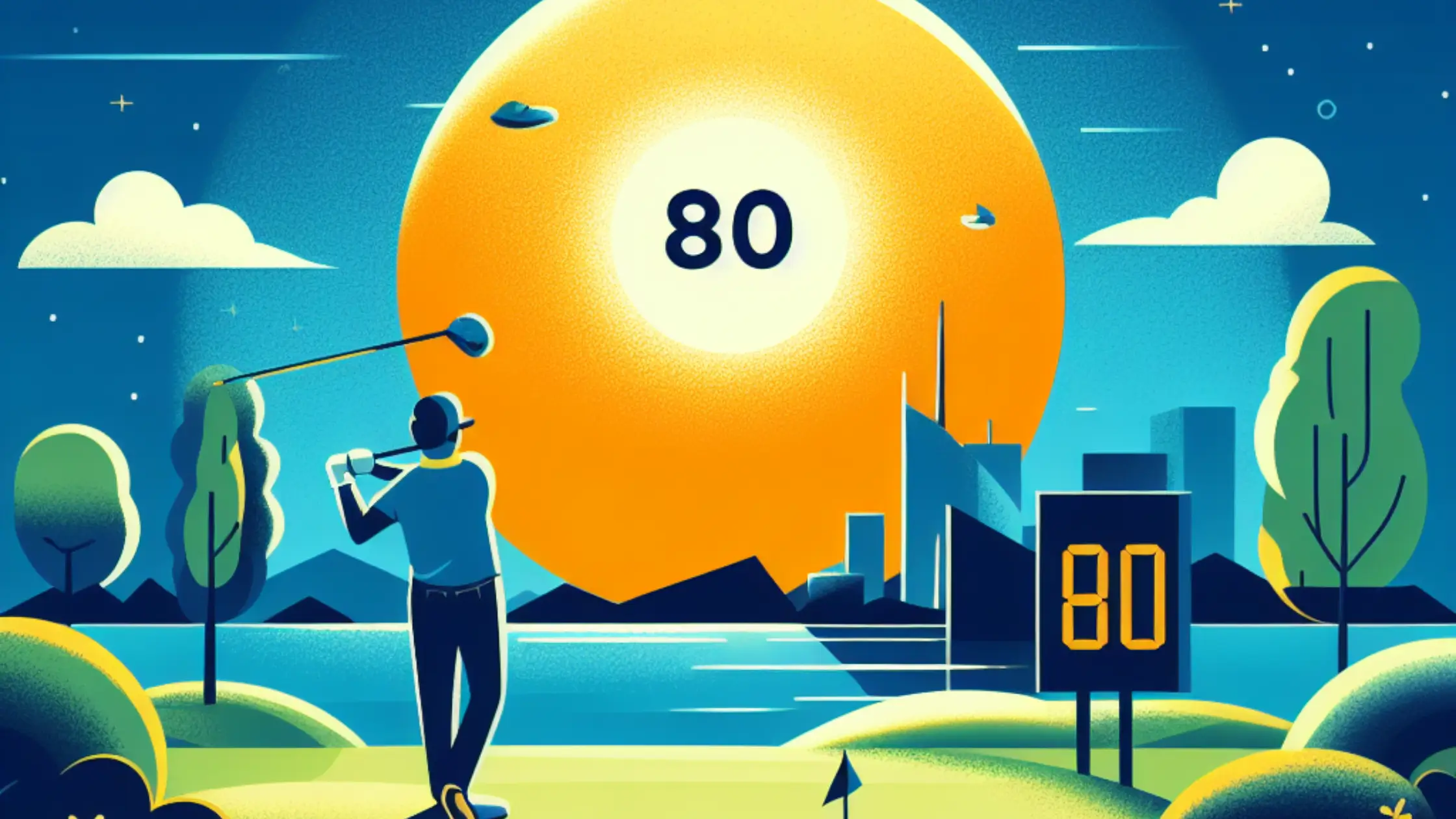What Does It Mean to Break 80 in Golf
In the world of golf, “breaking 80” act for a significant milestone achievement for amateur players. Shooting a round of golf under 80 strokes demonstrates a proficient level of skill, consistency, and course management. For many golfers, carding that first sub-80 round is a lifelong dream that requires years of practice, strategic refinement, and mental toughness to accomplish.
Understanding the meaning and significance behind breaking the 80 barrier can provide motivation for players still pursuing that goal. It also highlights the level of play and preparation required to get into the 70s. This article will analyze the key factors surrounding a sub-80 round, why it matters, and what it takes to successfully go low on the scorecard.
Defining the 80 Barrier
The 80-stroke threshold has become etched in golf lore as a tangible checkpoint that separates pretenders from contenders on the scorecard. It signifies that a player’s overall performance is squarely in the realm of seasoned, low handicap golfers rather than casual participants.
Breaking 80 requires piecing together a complete game built upon driving accuracy, reliable iron play, adept scrambling, and solid putting over the course of an entire 18-hole round. Par for a regulation course is typically 72 strokes, so a score of 79 or better is seven or eight shots lower. Shaving eight full strokes off par is no small feat for an amateur player.
Shooting in the mid-to-high 80s is a more typical score for decent club players. The leap across the 80 barrier demonstrates a heightened capability to score well when shots aren’t perfectly struck. Even professionals on tour don’t go especially low every round. But to come in under 80, amateurs must minimize big numbers by recovering well after errant shots.
Why Breaking 80 Matters
There are both performance-based and psychological reasons why shooting 79 or 78 matters more than managing an 83 or an 84. From a scoring perspective, it usually signifies greater consistency across all facets of the game. Higher scores often stem from blow up holes where triples and quadruples enter the equation. Those big numbers must be avoided.
Breaking 80 also builds self-assurance for the golfer to attack courses and try to go even lower rather than merely hoping to stumble into a good round. When players know they can shoot in the 70s, it spurs confidence under pressure. Shooting in the 60s requires an extra gear that 80-shooters possess.
Lastly, there is prestige attached to sub-80 scores that other tallies lack. It grants entry into an elite club of capable players. Fellow golfers admire someone who can “break 80” because they understand the level of golf that it requires. There are recreational players content shooting 90s or 100s, and breaking 80 shows a heightened dedication to continuous improvement.
Skills Necessary for Sub-80 Rounds
Reaching new milestones in golf requires a multi-pronged skill set that meshes both the physical and mental side of the game. Core areas that are prerequisites to breaking 80 include:
Consistent Ball-Striking
Shooting in the 70s demands quality ball-striking across a spectrum of clubs. Players must be able to confidently work the ball left-to-right or right-to-left with multiple irons and hybrids. Precise wedge play leads to more birdie opportunities. And driving accuracy keeps balls in play.
Proficiency Around Greens
Errant shots are inevitable. Recording scores under 80 necessitates short game magic to save par on holes that veer offline. Creative chips, precise pitches, and makeable putts preserve scoring stability. Players losing 4-5 shots a round around greens won’t break 80.
Course Management Skills
Amateurs trying to break 80 should have extensive course familiarity given the need for strategic planning. Knowing ideal landing spots, yardages, and angles into pins prevents unnecessary miscues. Players also must assess risk-reward equations regarding when to safely play vs. aggressively attack.
Composure
Shooting in the 70s requires composure because adversity will arise. Bogeys and flared tee shots happen to everyone. But GIRs and scrambling keep those holes from escalating. Breaking 80 is impossible for golfers frequently doubled over or broken following poor swings. Resiliency breeds scores in the 70s.
Steps to Realistically Breaking 80
Given the diverse golf skills required to shoot under 80, rapid improvement is an unrealistic ask for many players. But gradual progress towards that milestone is possible through:
Lessons: Connecting with a seasoned PGA teaching professional for swing evaluation, equipment assessment, and scoring strategy provides a map to breaking 80. Identifying areas for skills development via professional instruction accelerates the process.
Practice: There are no shortcuts to shooting rounds under 80. It demands dedication to refining all aspects of one’s golf game outside of competitive rounds. From the driving range to practice greens to sand bunkers, honing techniques and replicating various course scenarios is a must.
Course Management: Learning to maximize scoring opportunities based on a golfer’s strengths and minimize weaknesses is central to breaking 80. Analyzing past scorecards, journals, and shot patterns helps create effective game plans for new courses.
Mental Approach: Playing at a sub-80 level involves an astute mental approach regarding focus, resilience, decision-making, and awareness of situations. Working these psychological elements serve the physical skills necessary to break 80.
FAQs
What is considered breaking 80 in golf?
Breaking 80 refers to shooting a round of golf under 80 strokes. Since par for a regulation 18-hole course is typically around 72, carding a score of 79 or lower signals an exceptionally good round for an amateur golfer.
Why is 80 a special scoring benchmark in golf?
The number 80 has become etched in golf as a milestone number separating decent club players who shoot in the 80s from very skilled amateurs capable of scoring in the high 70s. Breaking through that scoring barrier demonstrates a complete overall game.
How many golfers are able to break 80?
Relatively few recreational golfers have the blend of skills to consistently break 80. On average, only about 20-25% of serious amateur players with established handicaps in the 5-to-15 range will record the occasional sub-80 round. Significant practice and course management is required.
What types of skills are required to shoot in the 70s?
Breaking 80 requires consistent ball-striking, excellent course management, quality short game execution around greens, and composure. Players must be able to confidently work the ball both ways, scramble to save par, and navigate risk-reward equations.
What is the best way to work towards breaking 80 in golf?
Breaking 80 happens gradually over time through lessons, honing fundamentals via range sessions, analyzing shot patterns after rounds, and sharpening the mental game. Mastering self-management skills both on and off the course speeds up the process towards scores in the 70s.
Conclusion
The significance behind shooting a round of golf under 80 strokes cannot be understated for capable amateurs seeking to take their game to another level. It represents a pinnacle of achievement built upon precision ball-striking, sharp mental acuity, course management, and composure. Breaking through the 80 barrier requires diligence across all aspects of one’s golf game over an extended period of time. But the skills and satisfaction derived from that breakthrough drives golfers obsessed with the pursuit of excellence.







